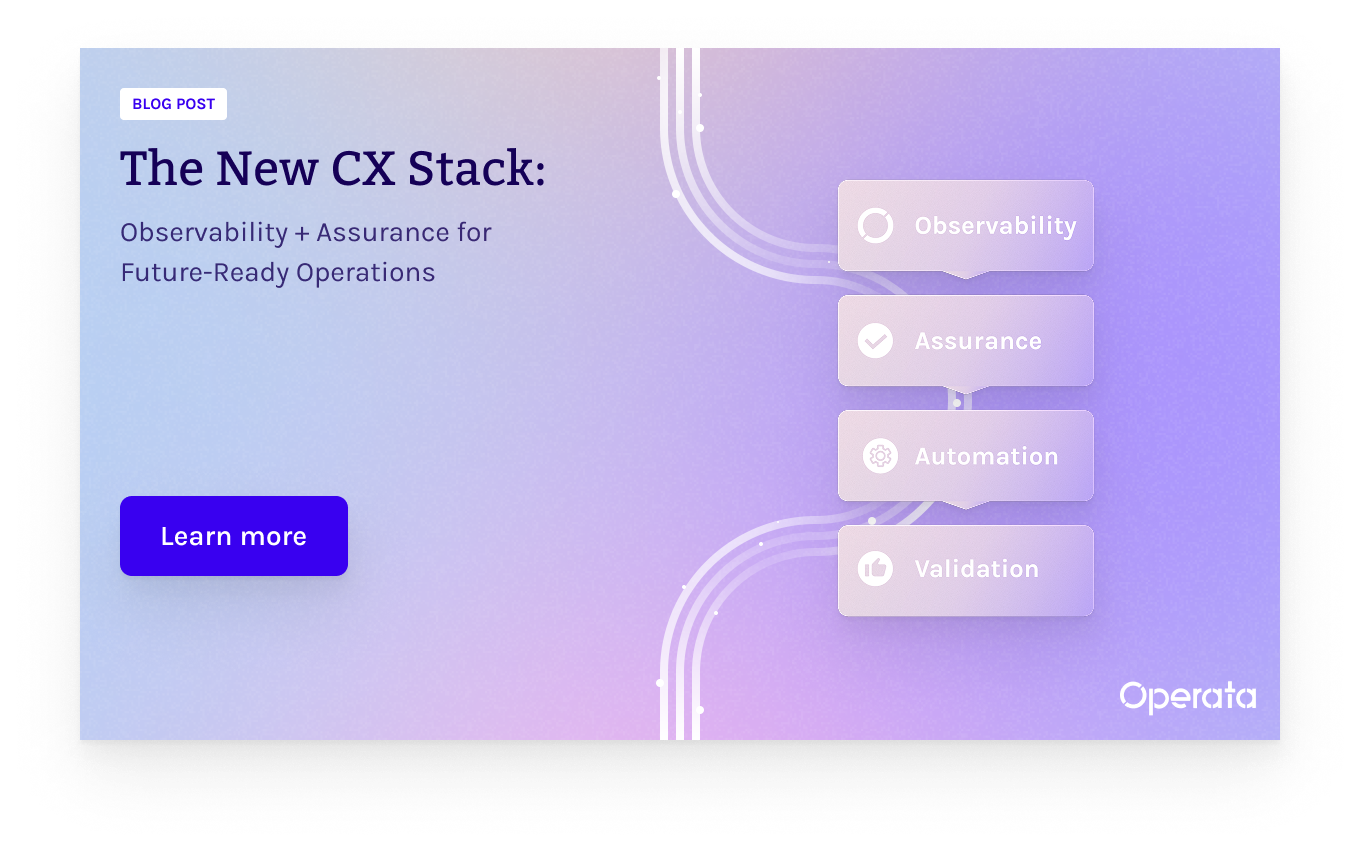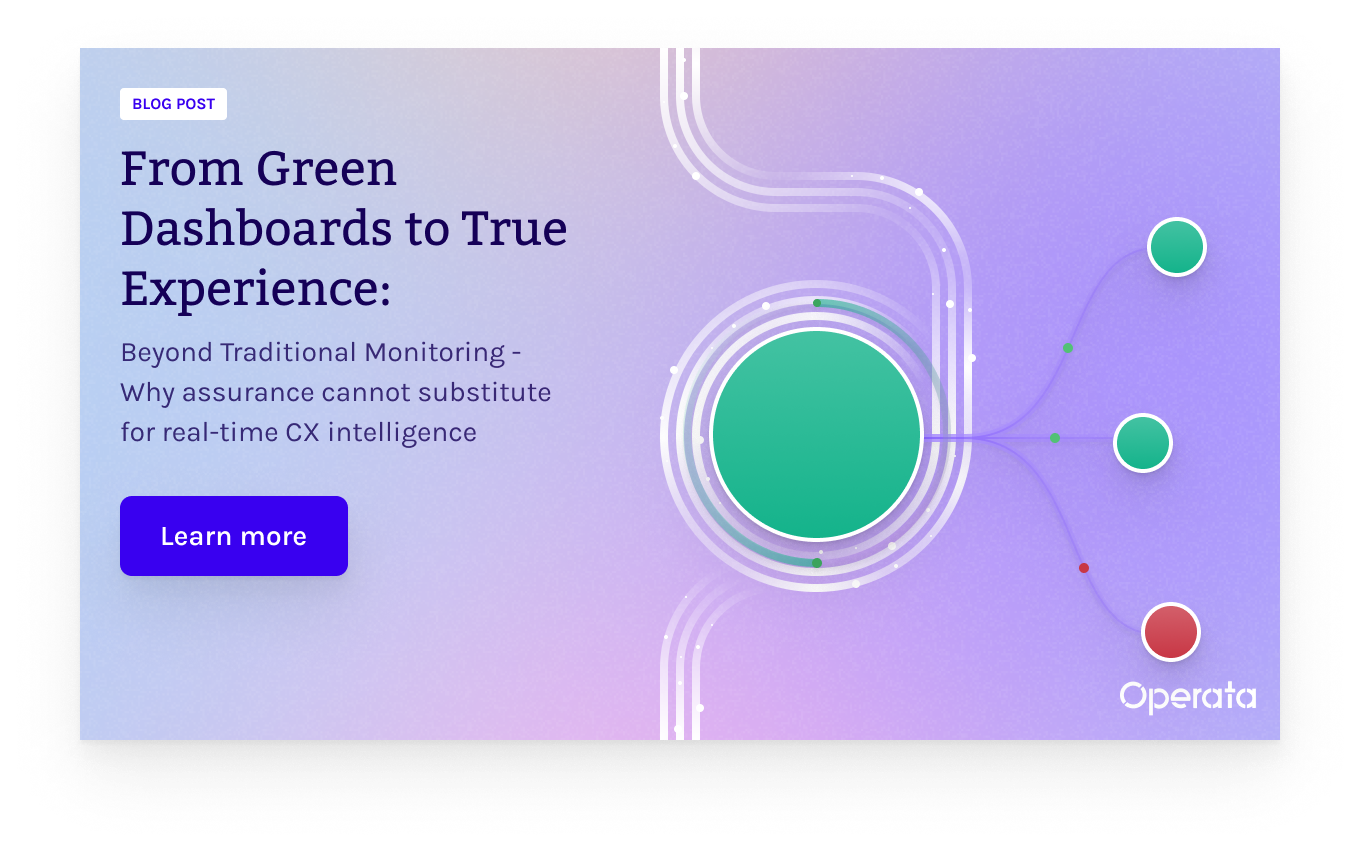Imagine this: you answer a call with a customer, expecting to address their concerns and provide assistance. But immediately upon answering, your voice quality is choppy, breaking up the audio and making it impossible for the customer to hear you. As a result, the customer hangs up and calls right back, your agent performance metrics take a nosedive, and your customer is now at risk of churning.
Frustrating, isn't it? Well, the good news is that you're not alone. Many cloud contact centers struggle with poor voice quality, and it's not just a minor inconvenience - it can trash your customer experience (CX).
At Operata, we understand the importance of delivering exceptional CX. That's why we've developed the world's only CX Observability platform built exclusively for cloud contact centers. Our platform continuously harmonizes technical, operations, and experience data, providing valuable insights and actions that improve contact center performance.
Through analysis of a random sampling of inbound calls, we uncovered a key insight that should raise eyebrows: a staggering 4% of all calls experienced low voice quality and had unusually short average agent talk time durations of around 36 seconds. Let that sink in for a moment. How many of those customers called right back, with lower sentiment and higher frustration? Even worse: how many of those customers didn’t call back, and instead called your competitor? This finding really underscores how technical performance factors like voice quality can significantly degrade call center operations and customer experience outcomes.
The impact on customer churn could be quite severe. In their 2023 CX Trends report, Zendesk found that "73 percent of those consumers will switch to a competitor after multiple bad experiences—and more than half will head for the exits after a single unsatisfactory interaction.”
When customers encounter poor voice quality, they become frustrated, leading to increased call abandonment rates (yes, customers can abandon calls while connected) and decreased customer satisfaction. It also creates undue stress on your agents and IT department, leading to low morale and high attrition.
So, how can you tackle poor voice quality and prevent it from trashing your CX? Here are a few tips to stay ahead of any issues:
- Leverage assurance and load testing tools: Assurance tools can help you evaluate and optimize network connectivity, identify potential bottlenecks, and ensure that your end-to-end cloud contact center environment (including at-home agents) can handle your expected volume of calls without compromising voice quality.
- Continuously monitor and analyze voice quality: Implement a solution like Operata's CX Observability platform to continuously monitor and analyze voice quality metrics like MOS and POLQA. By proactively identifying issues, you can take swift action to resolve them before they impact your customers.
- Optimize your network for WebRTC voice: Ensure that your network and bandwidth can handle the volume of calls without compromising voice quality. The network requirements for voice streaming are different from other traffic, and require specialized expertise and WebRTC observability tooling to achieve best results.
- Enable agents to self-resolve voice quality issues: Provide agents with continuous endpoint monitoring that can alert them to potential causes of low voice quality in real time, and train them on the equipment required for high-quality voice calls. Operata found that many technical factors can contribute to low voice quality, not just the network – including the agent’s built-in microphone.
Remember, your customers deserve (and expect) the best. Don't let poor voice quality trash your CX. With Operata's CX Observability platform and these proactive measures, you can ensure that calls are crystal clear, fostering positive customer interactions and driving business success.
If you’d like to see how Operata can help you proactively address low voice quality and other technical issues impacting CX, sign up for a free trial and get started in 30 minutes or less. Your customers will thank you for it.

















